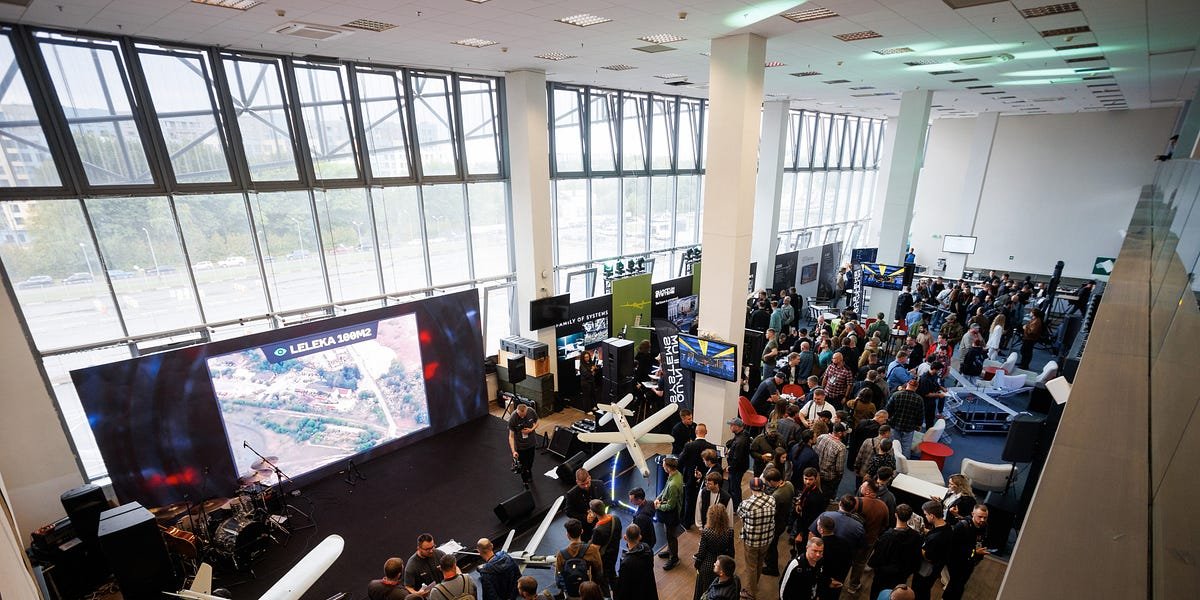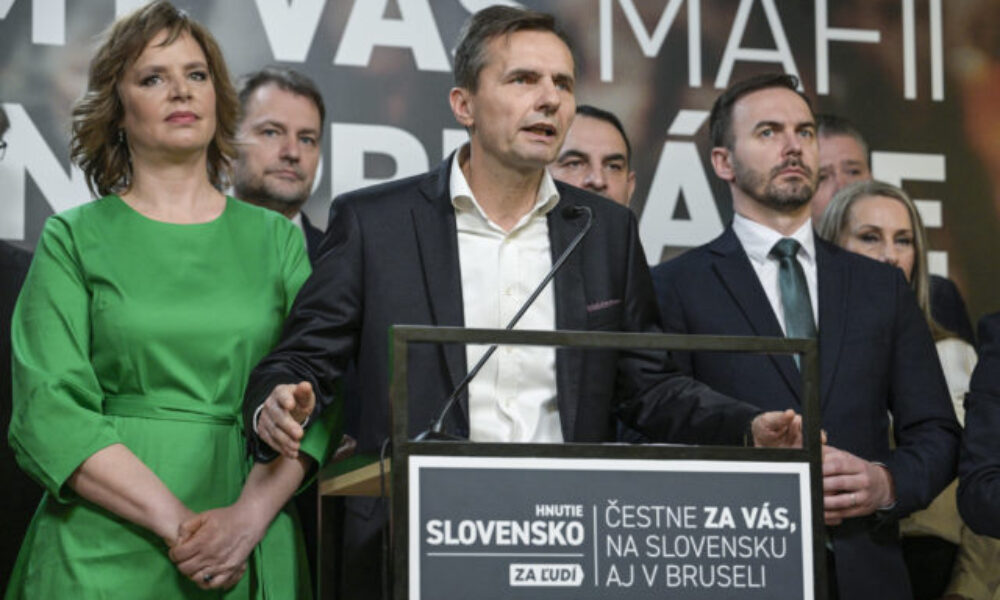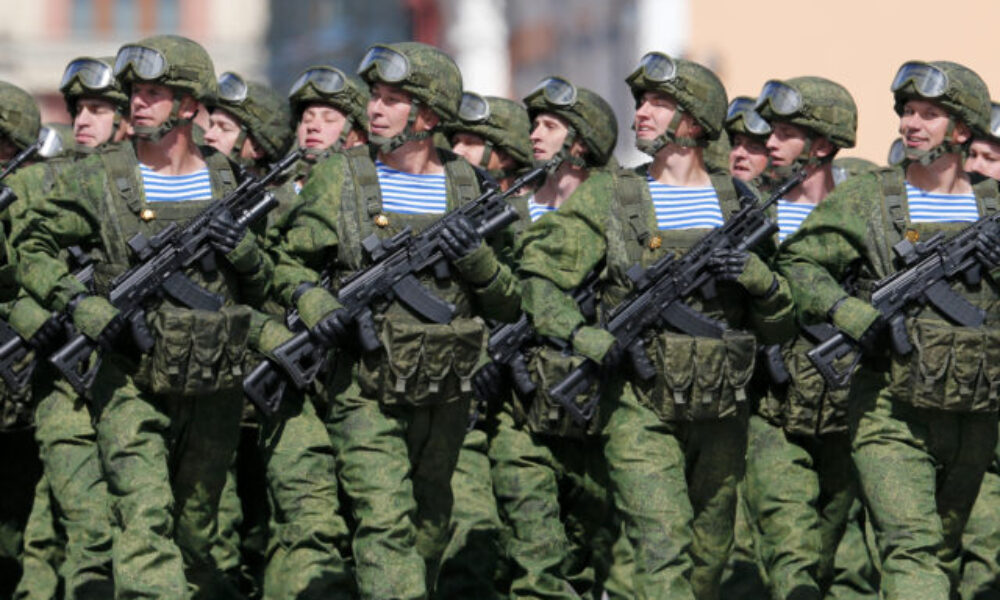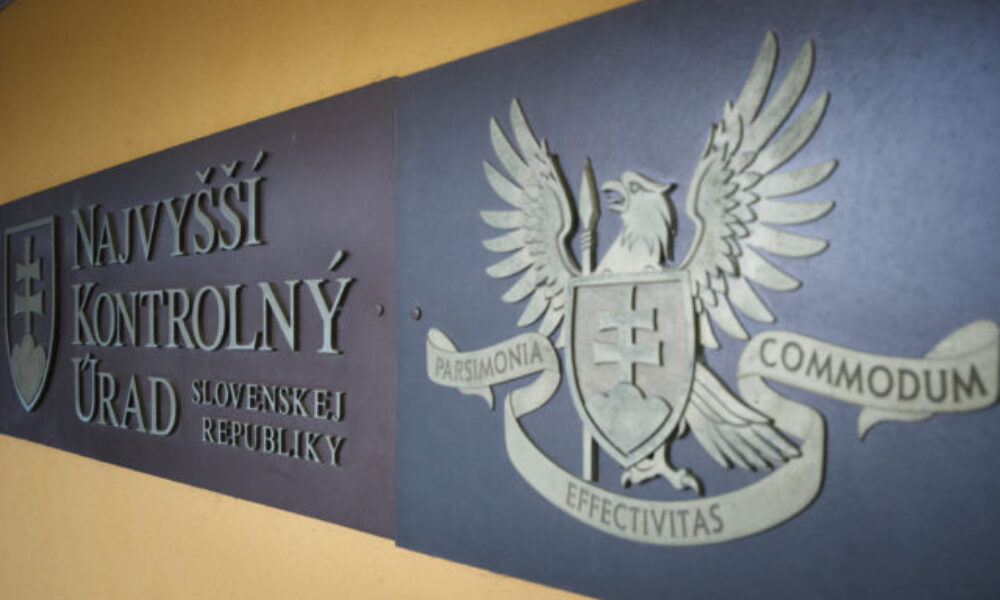
Brave1 is a unique government platform that has helped Ukraine’s defence industry reach its current level of development. Its core value lies in uniting manufacturers, creating a transparent grant-distribution mechanism, and building an ecosystem that evolves together with the market.
I’ve spoken with the Brave1 team to learn more about their philosophy and initiatives — grant program, Test in Ukraine, Defence Tech Valley, and especially their acclaimed marketplace, which will be the focus of a separate publication.
Additionally, I interviewed several Ukrainian manufacturers and investors working closely with Brave1 to understand how they have been able to benefit from this platform.
Just a reminder: my publications are not sponsored. This digest is supported only by private individuals — readers and subscribers like you.
Thank you for supporting my work!
What is Brave1?
Brave1 is a coordination platform that unites all players in the defence tech sector of Ukraine, providing organizational, informational, and financial support to accelerate the development of innovative defense projects in Ukraine. It was established in April 2023 and co-founded by the Ministry of Digital Transformation, the Ministry of Defence, the General Staff of the Armed Forces, the National Security and Defense Council, the Ministry of Strategic Industries, and the Ministry of Economy of Ukraine
The mission of Brave1 is to position Ukraine as a global leader in defence technology.
It is a centralized hub for collaboration between defence tech companies, security and defense forces, the government, investors, volunteer foundations, and the media.
The platform focuses on critical technological solutions, including:
-
missiles
-
anti-Shahed solutions
-
lasers
-
sea drones
-
swarm drones
-
autonomous strike drones
-
drone-carriers
-
anti-KAB solutions
-
Ukrainian Mavics
-
guided munitions.
Brave1’s work includes several key directions, including the Brave1 Marketplace; the Test in Ukraine program; the Defense Tech Valley dual-use technology investment summit; its grant program, and recently launched international defence partnerships, such as Brave–Norway, or the BraveTech EU initiative
The Philosophy Behind Brave1
Brave1 emerged as a response to Ukraine’s urgent need to rapidly develop its own defence technologies during the full-scale war. It is a government initiative personally championed by First Deputy Prime Minister and Minister of Digital Transformation Mykhailo Fedorov.
The role of Fedorov was particularly emphasized by one of the leading Ukrainian reconnaissance drone producers, Airlogix, which told me in a private comment that the success of Brave1 is closely tied to the leadership of the Minister: “It was Fedorov who initiated the creation of Brave1 and brought in specialists capable of building an effective and dynamic defence-tech ecosystem. The Brave1 team is genuinely exceptional — strong, fast, creative, and results-driven. They are producing solutions that are transforming the industry.”
The goal was to unite the efforts of the state, the military, and the private sector to create a single platform where developers can access funding, expertise, and opportunities to test their solutions in real combat conditions.
When building Brave1, the team studied the experience of leading international institutions such as DARPA and the Defense Innovation Unit in the United States, as well as NATO’s DIANA. These structures inspired the model of cooperation between the government, the armed forces, and innovative businesses.
At the same time, the Ukrainian approach has its own unique feature — an ultra-fast R&D cycle.
“While in the U.S. or Europe, the path from idea to field deployment may take years, in Ukraine, thanks to direct interaction with the frontline, this process can take only a few months — and sometimes even weeks,” a representative of Brave1 told Ukraine’s Arms Monitor in an exclusive commentary.
A vivid example is when developers immediately upgrade their drones or communication systems after combat testing, incorporating feedback from soldiers on the front lines. This continuous “frontline–development–frontline” cycle has become the foundation of the success of Ukraine’s defence innovation ecosystem.
We conduct R&D in real time — when a problem arises, we immediately bring developers together, test solutions on the battlefield, and implement them.
Brave1
Ukraine has accumulated one of the deepest practical expertise in drone warfare among democratic countries. Therefore, Brave1 not only addresses current operational needs but also anticipates what will be required five to ten years from now.
“They see all the problems that exist within the niche. For example, the Ukrainian UAV sector faced a serious challenge with communications. To raise the quality to a new level, Brave1 organized a closed event where manufacturers were invited to demonstrate how their solutions actually work”, added Airlogix.
Similar events are held for long-range strike drones and other capabilities. Brave1 creates spaces where everyone can find the counterparts they need: manufacturers find partners, engineers find technical solutions, and the military finds systems that truly work on the battlefield.
Test in Ukraine
The Test in Ukraine initiative was launched on July 17, 2025, during the LANDEURO Conference in Wiesbaden. Its goal is to provide foreign companies with the opportunity to test their defence technologies in real battlefield conditions and receive direct feedback from Ukrainian soldiers.
As of November 2025, 126 foreign companies from 17 countries have applied to participate in the program.
The largest number comes from the United States, but the project’s geography is quite broad — it includes EU countries, as well as South Korea, Singapore, the United Kingdom, Australia, and even Greenland.
One notable example was the test of a ground robotic system developed by the German company Diehl (best known for its IRIS-T air defence systems), conducted at the base of the 3rd Assault Brigade. The trials took place under conditions closely resembling actual combat, allowing the developers to receive detailed recommendations from the military on how to adapt the system to frontline needs.
Most frequently, manufacturers seek to test UAVs, artificial intelligence systems, interceptors, and communication equipment. Companies can conduct tests in person—making real-time adjustments on site—or delegate the process to the Brave1 team, which organizes the testing after an online briefing and provides a comprehensive report with recommendations.
The program allows participants to receive immediate, practical feedback from Ukrainian soldiers who work with similar technologies on a daily basis, as well as access to training grounds that closely replicate combat environments. It is an ecosystem where innovations are tested faster than anywhere else in the world.
“During the initial evaluation of the application, we assess whether a product aligns with the priority areas of Test in Ukraine. Key factors include reasonable pricing, high-quality photo and video materials, clear technical specifications, a description of the product’s advantages, and the company’s readiness to either come to Ukraine or send its system or prototype for testing,“ Brave1 told.
Brave1 Grant Program
Over its first two years, the Brave1 cluster has awarded over 540 grants totaling over UAH 2 billion (USD 50 million). The 2025 state budget earmarks nearly UAH 3 billion (USD 75 million) for defense tech grants, with priorities including missiles, lasers, drone swarms, CRPA antennas, unmanned surface (water) drones, counter-Shahed and counter-guided aerial bomb systems, a “mother drone” platform, a Ukrainian “Mavic” analogue, and guided munitions.
Since the beginning of 2025, Brave1 has awarded 240 grants to Ukrainian manufacturers.
One of the grant recipients is Oko Camera, which is a Ukrainian product company founded in 2022 that designs and manufactures ultra-sensitive thermal imaging cameras for unmanned systems, including UAS, UGV, and navigation systems.
Thy company representative shared with Ukraine’s Arms Monitor that they received a $25,000 grant from Brave1 in 2023, and “it became a true booster for our company’s development. Thanks to this support, we were able to significantly accelerate our R&D, release the first batch of cameras, and launch serial production. Brave1 also helped us organize both testing-ground and field trials together with Defence Forces units — our product passed them quickly”.
The Brave1 grant program is valued by manufacturers for its transparency, the mentors who are willing to share valuable expertise, and the speed of decision-making. One of the cluster’s strongest strengths is its focus on practical application and real impact on the country’s defence capability, as well as its ability to rapidly turn engineering ideas into ready-to-use solutions.
Ukrainian company Airlogix shared from its experience that, in its early phase, Brave1 operated almost like a government “angel investor.” Small grants were issued for new projects, startups, and early-stage R&D — a venture-like innovation model rather than one focused on commercial return.
Within the first months, Brave1 succeeded in forming a community of manufacturers and organizing events where businesses could speak directly with the government, the military, and one another.
As the market expanded, Brave1 transformed into a broad, open community accessible to any Ukrainian manufacturer. The platform helps companies find international investors, build partnerships, and solve technical challenges.
In essence, Brave1 has become a free state accelerator. “If you need, for example, a pneumatic catapult, Brave1 has a comprehensive catalog of solutions and a team that will help you locate the right manufacturer,” Viktor Lokotkov, Chief Marketing Officer at Airlogix, said.
Microgrants are now a thing of the past. Today, support is measured not in hundreds but in tens and hundreds of thousands of dollars, with the government backing more complex and strategically important projects.
However, the competitions have become far more rigorous:
— you cannot apply with a “raw” project;
— you need a competent team and engineering capacity;
— an expert commission must confirm that your solution will genuinely strengthen the Defence Forces.
Brave1 commented that each application goes through several stages of evaluation.
First, experts assess the technical component — determining whether the development aligns with the program’s technological priorities and objectives.
This is followed by a preliminary review by the Supervisory Board and a full verification of the applicant’s documentation for compliance with all requirements.
The final decision is made by the Fund’s Supervisory Board by a majority vote.
For the special grant program, a multi-level expert review is applied, involving specialized engineers and military professionals. The final decision is again made by the Supervisory Board.
Brave1 launched four new Brave Competitions, offering producers up to 150 million UAH (3.75 million USD) to develop and scale projects in priority areas. Participants work under specific technical requirements and must deliver solutions ready for immediate frontline deployment.
The four priority areas include:
-
Explosives: scaling up domestic production of high-explosive and initiating compounds, as well as nitrocellulose.
-
Tactical ballistic missiles: developing a Ukrainian equivalent of HIMARS.
-
Surface-to-air missile systems for countering UAVs: creating new, effective tools for air defence.
-
Artificial intelligence: advancing battlefield autonomy through the development of autonomous drones, targeting modules for interceptor drones, and AI solutions for countering guided aerial bombs (KABs), among others.
In August 2025, the Supervisory Board of the Innovation Development Fund approved an updated Brave1 grant program aimed at accelerating the deployment of technologies capable of influencing the course of the war. The program has a clear focus — 70 technological priorities, an accelerated decision-making process (1.5 months instead of 3), and greater flexibility in determining grant amounts.
According to Oko Camera, “it’s important to understand that applying for a grant is not only about receiving funding. It is also about getting your idea or project validated by experts from Brave1 and the General Staff. In addition, Brave1 has created the Brave1 Club — an opportunity for companies to receive support beyond grants.”
Defense Tech Valley Summit
Viktor Lokotkov from Airlogix said that just two years ago, Brave1 events drew 100–200 participants. The most recent Defence Tech Valley in Lviv attracted more than 5,000. “And that’s despite the fact that the event is closed, tickets are expensive, and preregistration is strict — with many applications rejected,” he emphasized.
Currently, Defense Tech Valley is considered one of the world’s largest investment summits focused on defense technologies.
Defense Tech Valley 2025 was the second flagship investment summit hosted by Brave1 on September 16–17 in Lviv. Brave1 brought together more than 230 Ukrainian and international companies. They showcased technologies already operating on the frontlines, as well as innovations shaping the future of warfare — from AI-powered missiles and drones to laser systems, electronic warfare (EW) solutions, autonomous ground platforms, and counter-Shahed systems.
Over two days, the forum gathered more than 5,000 visitors — government officials, military officers, venture capital representatives, and investors from Ukraine, Europe, the United States, the Middle East, and Asia — as well as leading manufacturers and startups.
“We are witnessing a smart consolidation within Ukraine’s defence-tech ecosystem. Engineering teams are increasingly merging into larger, more capable structures, focusing not on standalone products but on integrated, system-level solutions. This approach enhances competitiveness and enables entry into global markets,” commented Brave1.
International investors’ interest in Ukrainian defence technology continues to grow steadily, according to Brave1. What attracts them is not only the immediate wartime relevance but also the long-term potential of the sector. Ukrainian companies are already entering global markets, forming joint ventures with foreign partners, and actively presenting their products at international exhibitions.
Ukraine is transforming from a country of frontline innovation into a global player in the defence-tech sector.
Brave1
Pär Lager, CEO and co-founder of the Swedish investment fund Varangians, told Ukraine’s Arms Monitor that this year’s event has been very successful for them: “We’ve secured two new investments in Ukrainian defence-tech companies and launched two new joint ventures. Another investment is close to completion. We also brought on seven new investment partners from Ukraine, the EU, and the US, and held 25 follow-up meetings with companies. Four projects are now our top priority moving forward.”
Co-founder and CEO of MITS Capital, Perry Boyle, shared that Brave1 is a tremendous resource to Ukraine’s defense tech ecosystem. “MITS Capital has a specific set of capabilities we target for investment. We like it when companies have Brave1 investment because it is a useful demand signal and technology confirmation. We can take a company seeded by Brave1 that hits our investment screen and help that company sort itself out to be ready for institutional investment,” he added.
Ukraine’s allies should definitely take note of Brave1’s outstanding experience in addressing urgent battlefield needs and overcoming bureaucratic inertia.
Brave1’s mission resonates deeply with my own values: to facilitate rather than obstruct, and to strengthen cooperation across Ukraine’s defence-tech ecosystem — ultimately bringing Ukraine’s victory closer.
In my next publication, planned for sometime next week, I will focus on the Brave1 Marketplace — a platform through which I myself discovered many of the contacts I’ve interviewed for Ukraine’s Arms Monitor. This alone stands as a testament to Brave1’s purpose and impact.
Read some of my related articles:










